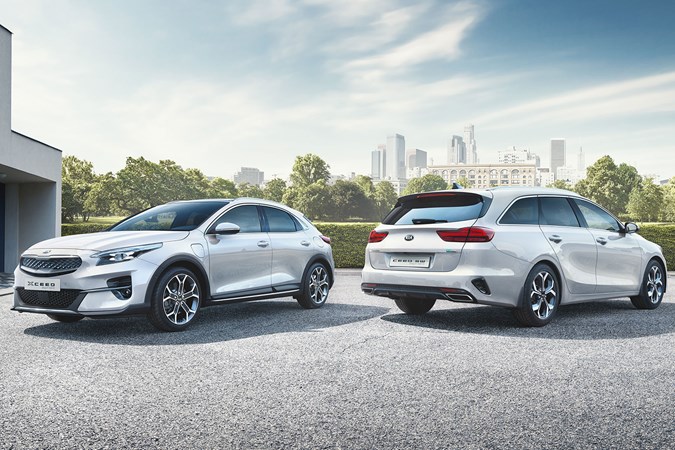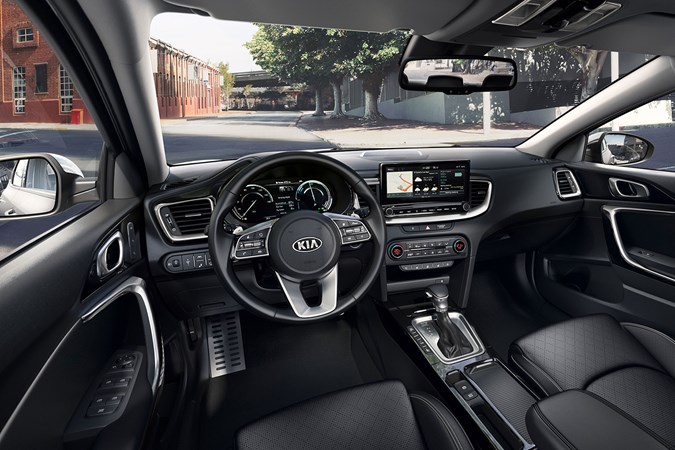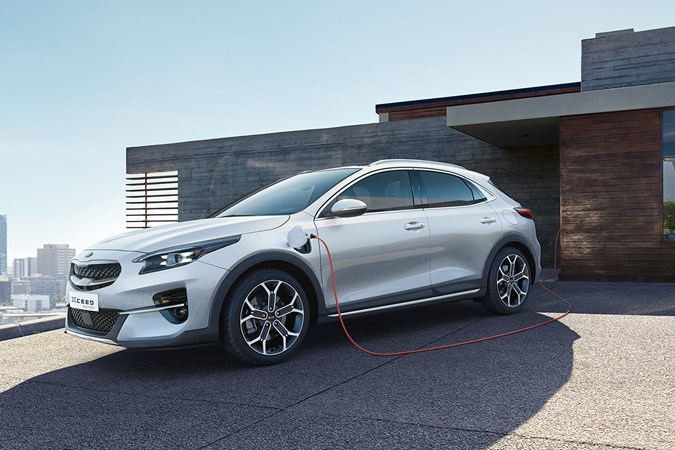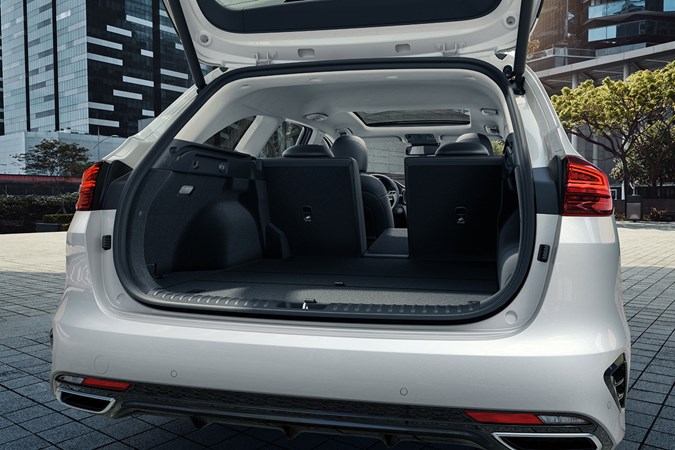
Kia is rolling out more electrified versions of its most popular models. The Ceed family is the latest to model to be given the plug-in hybrid versions of the new XCeed SUV and Ceed Sportswagon set to adopt the tech, joining the various Niro models, Sportage mild-hybrids and Soul EV.
There are no fancy names for these models either, they’re simply known as the XCeed Plug-in Hybrid and Ceed Sportswagon Plug-in Hybrid. They are available in a number of trim levels on each model, and are available to order now with deliveries in April.
Well-equipped trim choices available
If you’re going to be spending a lot of time behind the wheel, you’ll be pleased to know Kia has made these new PHEV versions available in high-spec trims. The XCeed comes in a choice of 3 or First Edition models, while the Ceed SW is only available with the 3 trim – the highest-spec available.
All models get Kia’s latest 10.25-inch widescreen infotainment system. It’s called Uvo Connect, and it allows you to check the status of your car remotely from your phone.
Features including seeing where it is on a map (hopefully where you left it) and how much charge/petrol it has in it, but also the location of charging points nearby and the ability to schedule when to begin charging the car, when parked at home for instance.

The digital dials that debuted on the XCeed are standard on both the crossover and estate PHEV models, with unique displays relevant to the plug-ins to show efficiency information. There’s also an indicator on the dashboard so see the status of the car’s charging from outside the car. Neat and very helpful if you don’t want to venture outside in the rain from your house, for example.
Other small touches include a ‘Driver Only’ setting for the climate control, switching off all vents other than those useful to the driver, in a bid to help save energy. Unlikely to be a huge amount, but every little helps when you’re trying to maximise electric driving range and save fuel.
What’s under the bonnet?
Both cars are powered by a 1.6-litre petrol engine used in combination with an 8.9kWh battery pack and electric motor. Combined, they produce 141hp and 265Nm of torque. That’s somwhere between the pulling power figures of the two 1.6-litre diesels also available. There’s a six-speed dual-clutch automatic transmission sending power to the front wheels, which Kia claims makes for a smoother and more efficient drive than rival plug-in hybrids that use a CVT setup.
While a good amount of oomph is one benefit of the electric motor, the biggest benefit should be the fuel economy, especially if you spend most of your time driving around town. Kia says the XCeed should travel up to 36 miles on battery power alone, taking two hours and 15 minutes to charge from a 3.3kW AC charger (the slowest option).

The Ceed Sportswagon PHEV may well use the same petrol engine and electric motor as Xceed, but Kia has managed to eke out an extra mile of EV range from the estate compared with the XCeed, claiming 37 miles. If you manage to charge up regularly, and before you run out of juice and require the engine as backup, you could feasibly do all your driving in zero-emissions mode until you need to travel further afield.
Practicality takes a small hit in both cases
The PHEV tech has a minimal impact on the packaging of the car. However, the battery pack for the electric motor still needs to go somewhere, and in the case of these cars it’s under the rear seats with the fuel tank.

As a result, some boot space has been eaten into (like in nearly every plug-in alternative to a regular car), with the XCeed’s boot falling to 291 litres (standard car offers 426 litres with the dual-height boot floor in its lowest position), while the Sportswagon offers 437 litres (down from 625 litres).
That’s a bit of a fall, but the most glaring difference is that the floor is now one height only. We’ll check this when we review each model.
What this means for you
If you live in town or have a shorter commute, these plug-in versions of the Ceed and XCeed make a great deal of sense. They will undoubtedly be smoother to drive, offer battery-only running for a decent distance, and come with the company car tax advantages that come with a PHEV, when the Benefit-In-Kind rate drops to 12% in April 2020.
In the longer term, and allied with Kia’s industry-leading seven-year warranty, the prospects of better resale values for PHEVs in the future compared with diesel will please those who buy and keep their cars for a long time.
The new PHEV versions are on sale now with deliveries in April, but until then you can read full reviews of the regular cars below:
>> Full review of the Kia XCeed crossover
>> Full review of the more practical Ceed Sportswagon
>> All the new electric cars coming soon
Just so you know, we may receive a commission or other compensation from the links on this website - read why you should trust us.











